Source: Norman Seeff
On January 24th 2014, the Macintosh will officially turn 30. It was on that infamous day in 1984 that the late Apple CEO Steve Jobs officially unveiled the first Macintosh computer to the world; it was the world's first truly personal computer. The Macintosh revolutionised the personal computing market as it was the first mass-market computer to feature a GUI (Graphical User Interface). It was also a pretty powerful and good-looking computer for its day (although not-so-much by today's standards). It's been quite an impressive thirty years for Apple and over the last three decades, the Macintosh has evolved into one of the most beautiful, well-designed and powerful personal computers on the market. Apple has released countless versions of the Mac and although some failed, most were hugely successful.
To celebrate the thirtieth anniversary of the original Macintosh 128K, we thought we'd take a look at exactly how the design of the Mac has evolved from 1984 - 2014. It's by no means a fully comprehensive list (there's just too many Mac's to include on a single list!), but we've included we what believe to be the most notable Macintosh computers from a design point-of-view.
1984: The Original Macintosh
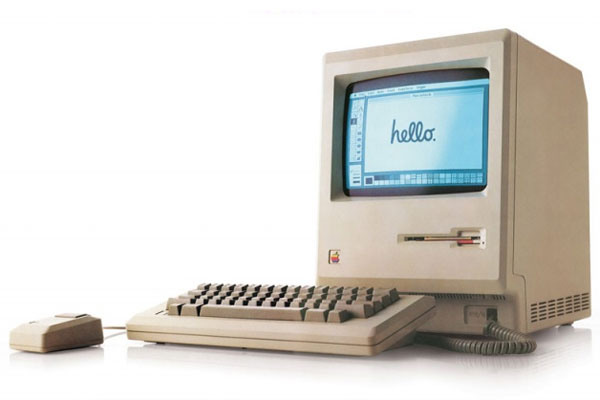
Originally released in January 1984, the year 2014 marks the thirtieth anniversary of the Macintosh computer. This truly was the computer that started it all as it was first ever affordable (to some people at least) personal computer that utilised a GUI (Graphical User Interface). It completely revolutionised personal computing and continued to do so for years to come. This was the computer that was famously unveiled by the late Steve jobs back in 1984. He 'wowed' the audience when he showed off the many features of the Macintosh on-stage, most of which had never been seen in a personal computer before.
The computer itself featured an 8Mhz Motorola MC68000 CPU and just 128Kb of RAM. It was the first personal computer to feature a floppy disk drive, keyboard and mouse. It weighed a total of 16.5 pounds (a far-cry from the notebook's we know and love today). It was also the first computer to be sold 'out-of-the-box', meaning that the computer was usable straight out of the box and could be set-up without any technical expertise. Later in 1984, Apple released the Macintosh 512K which featured quadruple the RAM of the original computer, along with numerous other improvements.
Fact: The original Macintosh was priced at $2,495 when it was released in 1984. It featured just 128kb of RAM.
Fact: The original Macintosh commercial was directed by Ridley Scott and remains one of the most famous commercials of all time.
1986: Macintosh Plus
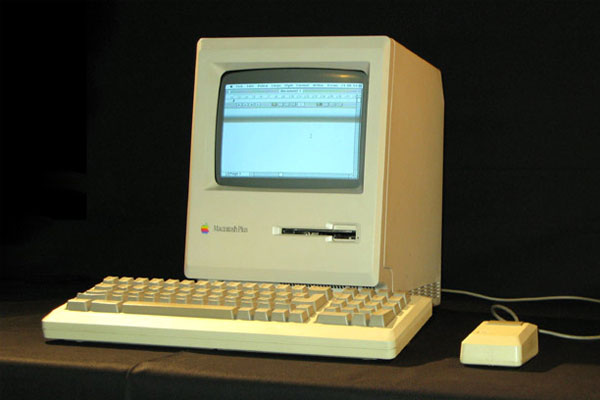
Source: WikiPedia
The Macintosh Plus was released in early 1986, around two years after the release of the original Macintosh back in 1984. On the face of it, the design of the Macintosh Plus looked pretty similar to that of the original Macintosh. It had the same keyboard and mouse and was roughly the same size. It also had a floppy disc slot in the same location and the exact same processer. However, the Macintosh Plus featured many advancements. For a start, the ROM was doubled from 64kb to 128kb and it also featured an SCSI port (the first Mac ever to do so).
It was iconic from a design point-of-view as this was the first Mac to feature a platinum coloured case (something that paved the way for the future of almost all Mac products). A Macintosh Plus ED was also released later in the year which was designed to be sold into educational markets.
Fact: The Macintosh Plus was originally sold for $2,600 when it was released in 1986. It featured 128kb RAM and 128kb ROM.
Fact: The codename for the Macintosh Plus was 'Mr. T'.
1990: Macintosh Classic
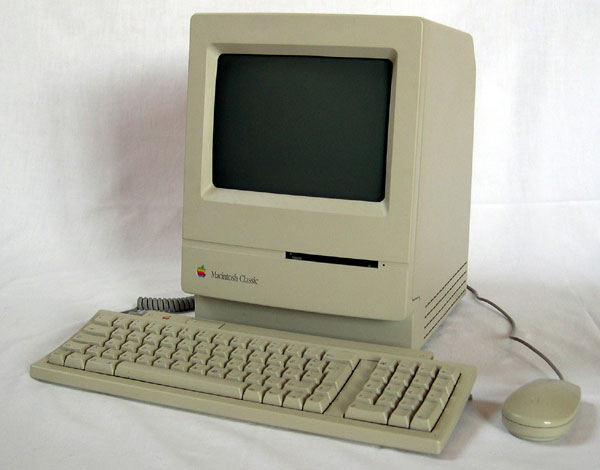
Source: WikiPedia
The Macintosh Classic was released in October 1990, over four years after the release of the Macintosh Plus in 1986. Despite the relatively similar design for both the Macintosh Plus and original Macintosh, the Macintosh Classic actually featured an entirely redesigned case which was somewhat simplified. If you look closely, you'll notice that the design of the floppy disk port is essentially just a hole and that the air vents at the bottom of the PC are also slightly more visually appealing that its predecessor.
Inside, the Macintosh Classic was pretty similar to the Macintosh Plus. It featured the same Motorola 68000 8Mhz processor but with double the RAM of the Macintosh Plus (1mb). It also featured the 1.4mb 'SuperDrive' floppy disk drive. Apple actually released two versions of the Macintosh Classic; a high-end and low-end version. The low-end version featured 1 MB of RAM and cost just $999 (this made it the lowest priced Macintosh to date). The high-end version featured 2 MB of RAM and also included a 40 MB hard drive. This was sold for $1,499.
Fact: The Macintosh Classic was available to purchase for two years until it was discontinued in 1992.
1993: Macintosh Colour Classic
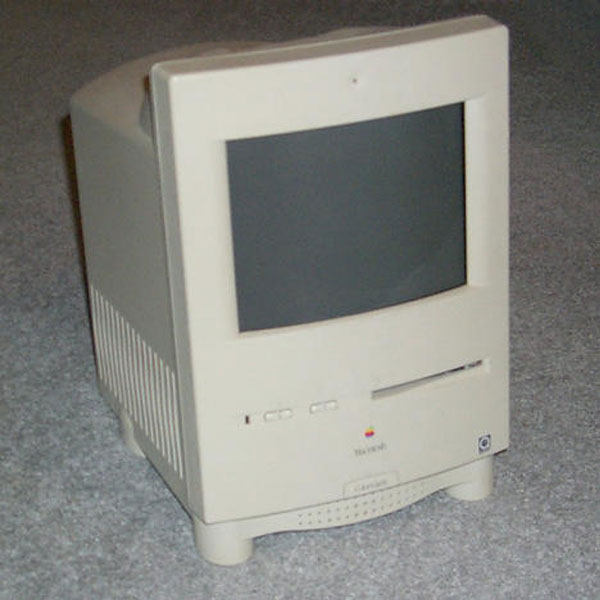
Source: WikiPedia
Apple released the Macintosh Colour Classic in February 1993, around two and a half years after the release of the Macintosh Classic. The Macintosh Colour Classic featured a completely restyled case that was a rather odd shape for a personal computer. It also had a completely redesigned (and much less clunky) keyboard and mouse. Inside the computer however, things weren't so different from the Macintosh Classic, although it did feature a faster processor (a 16Mhz Motorola MC68030) and 2 MB of onboard RAM (this was also upgradable to 10Mb).
It featured a 40Mb hard drive (again, this could be upgraded to 160 MB if required) and the same 1.4 MB 'SuperDrive' floppy drive as the Macintosh Classic. Obviously, the most notable technological advance with the Macintosh Colour Classic was the inclusion of a colour screen. This was the first Mac to feature a full colour screen which also had a resolution of 512 x 384 pixels.
Fact: The Macintosh Colour Classic was originally sold for $1,390 in 1993. It was also later released as the Performa 250.
Fact: 'Slice' was the codename for the Macintosh Colour Classic.
1995: Macintosh Performa 5200
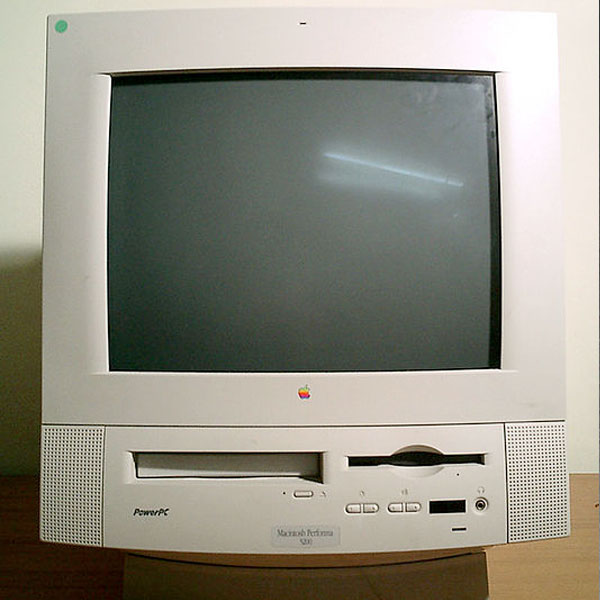
Source: WikiPedia
Apple's Macintosh Performa 5200 PC was released in April 1995, just over two years after the release of the Macintosh Colour Classic and the same year that Windows 95 was released. The Macintosh Performa 5200 featured a completely redesigned case that pretty much defined the visual appearance of personal desktop computers in the 1990's. It was one of the first computers to feature a CD-ROM drive alongside the traditional floppy drive.
The Performa 5200 included a PowerPC 603 processor running at 75Mhz and a 500Mb hard drive. It also featured a large 15-inch full colour CRT monitor built-in. Strangely however, the Performa 5200 featured no on-board RAM although it was expandable up to 64Mb. Ironically, the Macintosh Performa 5200 wasn't such a great performer as the hardware design wasn't all too great. It was replaced just a year later by the much faster Performa 5260.
Fact: The Macintosh Performa 5200 originally sold for $2,000 when it was released in 1995.
Fact: 'Trailblazer', 'Bongo', 'Rebound' and 'Transformer' were all codenames for the Performa 5200 Macintosh PC series.
1998: iMac G3
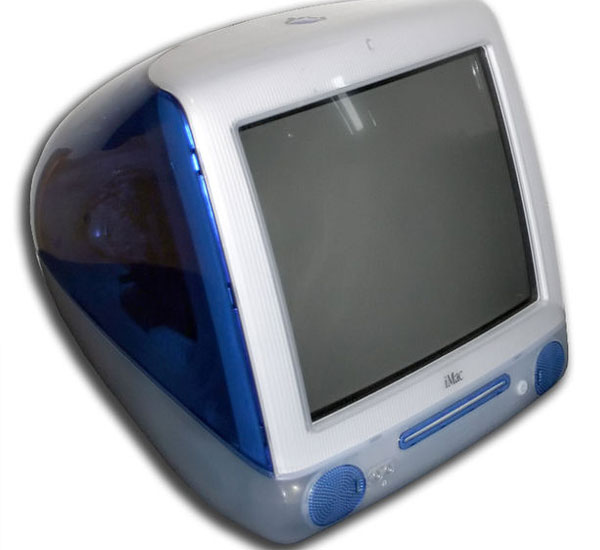
Source: WikiPedia
Apple released the iMac G3 in August 1998, three years after the release of the Macintosh Performa 5200. The iMac G3 was a revolutionary product as it was the first beautifully designed all-in-one PC to hit the consumer market. It was also the first product introduced by the newly reinstated CEO, Steve Jobs and it essentially saved the Apple Corporation from financial ruin.
It was this computer that redefined Apple as a simple and elegant brand with a passion for great design. The iMac G3 was made available in a range of different colours and used translucent plastic to allow the consumer to see the inner workings of the computer. In effect, the CRT (Cathode Ray Tube) was used as a fundamental part of the design.
Fact: Sir Jonathon Ive was credited with the design of the iMac G3 and it remains one of the most iconic designs of his career.
Fact: The iMac G3 (the base model) sold for just $999, making it one of the most beautiful and affordable consumer PC's ever.
1999: PowerMac G3
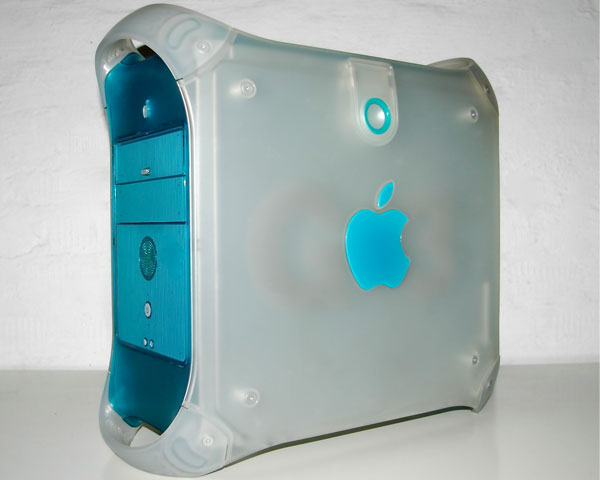
Source: WikiPedia
The Apple PowerMac G3 (Blue & White) was released in January 1999, just a few months after the release of the iMac G3. Despite the fact that the PowerMac G3 shares the same name as its predecessor (which was available prior to 1999), the Blue & White PowerMac G3 was an entirely different computer. Following the success of the iMac G3 in 1998, Apple created a translucent easy-opening case for the PowerMac G3. It was one of the most beautiful desktop computers ever to be released.
Apple's PowerMac G3 was the first Mac to support FireWire connectivity and also included ADB ports for backwards connectivity. The PowerMac G3 featured no floppy drive and no standard serial drive ports; this was considered quite controversial at the time, although it didn't seem to harm the sales of the machines. The PC featured up to 450Mhz of processing power and up to 1Gb of RAM. It also featured between 6Gb and 12Gb hard drive space.
Fact: The PowerMac G3 sold for between $1,599 and around $5,000, depending on the model that was chosen.
Fact: 'Yosemite' was the codename for the PowerMac G3.
1999: iBook
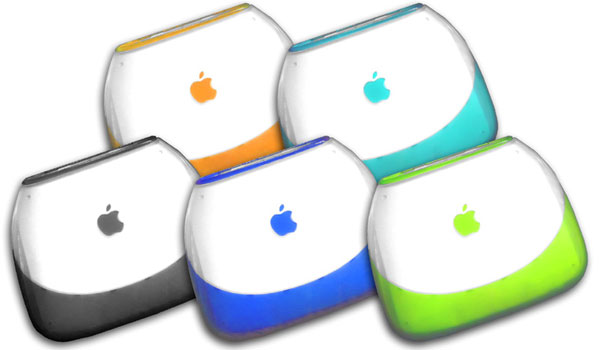
Source: WikiPedia
Apple released the iBook in September 1999, just over a year after the release of the hugely popular iMac G3. Apple's iBook was one of the most eagerly awaited Apple products of its day. It was created for the same consumer market as the iMac G3 and although it was essentially a low-end portable product, it was quite a revolutionary PC. The iBook featured the same iconic design as the iMac G3 with the same use of translucent plastic throughout. It was a beautifully well-designed product and was greatly received by the consumer PC market at the time.
It featured a 300Mhz PowerPC 750 processor and either 32Mb or 64Mb of RAM (depending on the model). The base model featured a 3.2Gb hard drive as standard. The iBook was the first ever Mac to be released with AGP-based graphics and UMA (Unified Motherboard Architecture). It was also the first Mac to feature AirPort connectivity, which allowed up to ten iBook's to share one base-station.
Fact: Apple's iconic iBook was released in September 1999 and was sold for $1,599.
Fact: The iBook was upgraded in February 2000 to include 64Mb of RAM and a 6Gb hard drive as standard.
Fact: The design of the Apple iBook looked a little like a clamshell.
2000: PowerMac G4
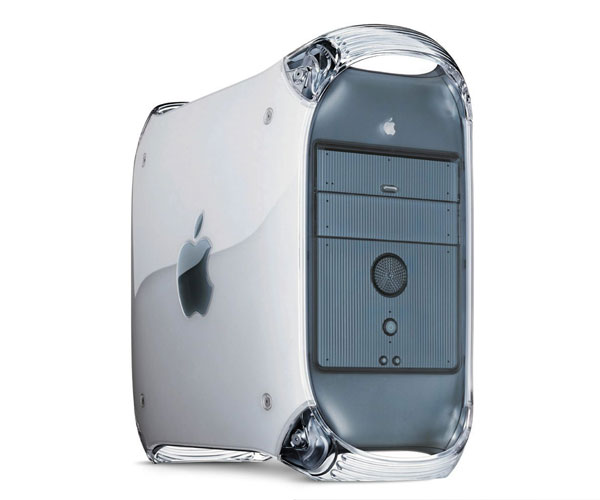
Source
Apple's PowerMac G4 was released in August 2000, around eighteen months after the release of the PowerMac G3 (for which it was intended to replace). The PowerMac G4 featured the same iconic translucent design as the PowerMac G3 but under the hood, Apple included a number of powerful changes. For example, the PowerMac G4 saw the addition of Gigabit Ethernet and a dual-core processor running at 400 - 500 Mhz.
Apple released three versions of the PowerMac G4; a single-core processer version running at 400Mhz featuring 64Mb of RAM and a 20GB hard drive, a dual-core version running at 450Mhz featuring 128 Mb of RAM and a 30GB hard drive and lastly, a dual-core version running at 500Mhz featuring 256Mb of RAM, a 40GB hard drive and a DVD-RAM drive. The PowerMac G4 was one of the most powerful personal computers of its day and sold for between $1,599 and $3,499 depending on the configuration.
Fact: 'Mystic' was the codename for the PowerMac G4.
Fact: Apple's PowerMac G4 originally sold at $1,599 for the base model featuring a 400Mhz processor, a 20GB hard drive and 64Mb of RAM.
2002: iMac G4
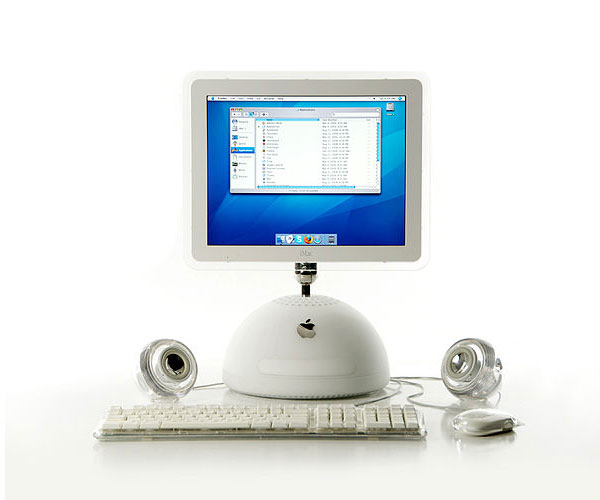
Source: WikiPedia
Apple's iMac G4 (also known as the flat-panel iMac) was originally released in January 2002, around three and a half years after the introduction of the colourful iMac G3. The iMac G4 was a beautifully well-designed PC and was also the first iMac to be completely redesigned since the release of the original. It featured a beautiful flat-panel display rather than the traditional CRT display that had been used in all previous versions of the Mac. In fact, when the produced was announced by the late Steve Jobs, he explained that when the new iMac was released, the CRT would be "officially dead".
Apple shipped the iMac G4 in three different configurations. The low-end model sold for $1,299 and featured a 700Mhz processor, a 40GB hard drive, 128Mb of RAM and a CD-RW drive; the mid-end model was priced at $1,499 and featured the same 700Mhz processor but included 256Mb of RAM, a CD-RAW/DVD-ROM 'Combo Drive' and a 40Gb hard drive and the high-end model was sold for $1,799 and featured an 800Mhz processor, a 60Gb hard drive, a CD-RW/DVD-ROM drive and 256Mb of RAM. All iMac G4 models were shipped with a Apple Pro Keyboard and Mouse and the following year, Apple cut the price of all iMac G4 models significantly.
Fact: Due to its design, the iMac G4 become known as the desk-lamp Mac by some in the Apple community.
Fact: Apple's PowerMac G4 was discontinued in 2004.
2005: iMac G5
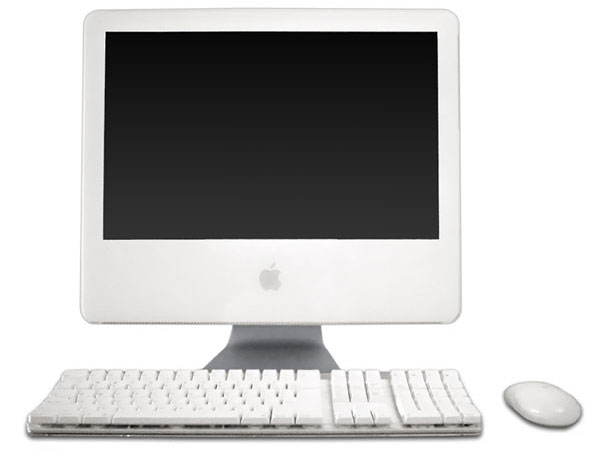
Source: WikiPedia
Apple introduced the iMac G5 in May 2005 to replace the iMac G4. It was released around three years after the release of the iMac G4. Apple completely redesigned the iMac as you can see from the photo above. The most iconic thing about the iMac G5 was the beautiful widescreen display. Aside from this, the iMac G5 featured relatively modest improvements in terms of speed and performance.
It shipped with either a 160GB or 250GB hard drive and also included Airport Extreme and Bluetooth, both of which Apple decided to include as standard on all models. There was also 512Mb of RAM and the PC shipped with Mac OSX 10.4 Tiger. Apple also released a second version of the iMac G5 in October 2005 (just a few months after the original release) which was the first Mac to feature Apple's front-facing iSight camera. It was packaged in a slightly slimmer case and included a remote control sensor as standard. Apple also lowered the pricing slightly.
Fact: Apple's iMac G5 as released in three versions ranging from $1,299 to $1,799.
Fact: The iMac G5 was a revolutionary PC as it featured an all-in-one design that was just a couple of inches deep.
2005: PowerMac G5
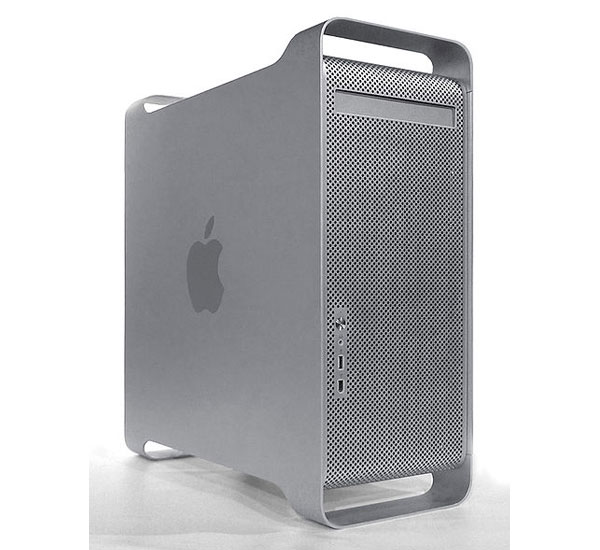
Source: WikiPedia
Apple released the PowerMac G5 in October 2005. It was a professional-grade desktop computer featuring a dual-core PowerPC G5 processor. It was also the last Mac to ever use PowerPC processors as Apple later opted for an Intel-based replacement. The PowerMac G5 was hailed as the world's first mass-market PC featuring 64-bit architecture. It was one of the fastest computers that Apple had built to date.
As with previous Macintosh computers, the PowerMac G5 was released in three versions; a low-end, mid-end and high-end option featuring 2.0Ghz, 2.3Ghz and 2x2.5Ghz processors respectively. Apple priced the PowerMac G5 starting at $1,999. The PowerMac G5 had faster memory and bus speeds than its predecessor. It also had better compatibility when it came to graphics cards due to numerous PCI Express extension slots.
Fact: Apple discontinued the PowerMac G5 in August 2006 in favour of the new Intel-based Mac Pro.
Fact: Apple's PowerMac G5 had eight RAM slots and was expandable up to 16GB of RAM.
2005: Mac Mini
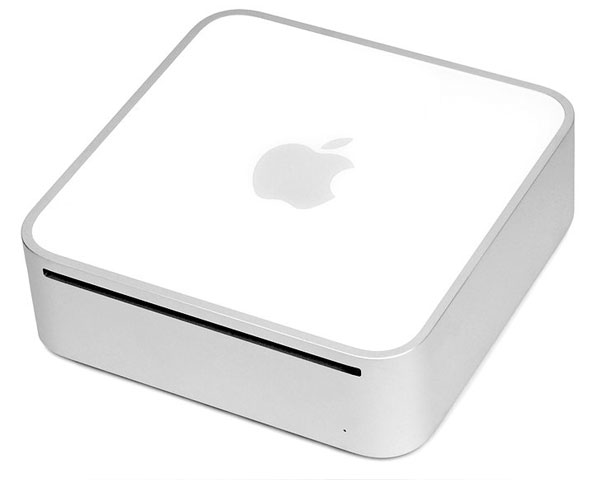
Source: WikiPedia
Apple released the Mac Mini PC in January 2005. Apple's intention was to attempt to establish a presence within the low-end consumer market. The Mac Mini was designed to tempt Windows PC owners into switching to a Mac and thus, it came with a relatively low price tag (for an Apple product). The Mac Mini managed to pack some quite impressive stats into a relatively small package. It featured a PowerPC G4 processor and up to 1GB of on-board RAM. It also came with either a 40GB or 80Gb hard drive; plenty for the average PC user.
Unusually for Apple, this was one of the first Mac's for many years that was released without a monitor, keyboard or any additional peripherals. The idea was that PC owners could upgrade to a Mac Mini for as little as $500, whilst maintaining their current monitor, keyboard and mouse. The Mac Mini was just 6.5 inches wide and two inches tall. It was shipped in three variations as many previous Macintosh computers were.
Fact: All versions of the Mac Mini shipped with Bluetooth and Airport Extreme. They also shipped with 256MB of RAM as standard.
Fact: In July 2005, Apple upgraded all Mac Mini models to include 512Mb of RAM.
2006: Mac Pro
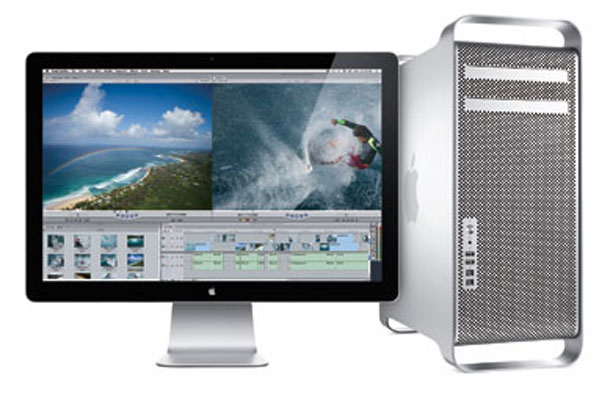
Source: WikiPedia
Apple released the original Mac Pro in August 2006 to replace its predecessor, the PowerMac G5. The Mac Pro was the first Mac to utilise an Intel processor and marked Apple's transition from the previous PowerPC processors to Intel-based processors. Apple's Mac Pro utilised two dual-core Intel Xeon 5100 processors (nicknamed Woodcrest). It was Apple's most powerful personal computer ever.
Design-wise, the Mac Pro was virtually identical to the PowerMac G5, aside from the exclusion of a second optical drive bay. The Mac Pro could be upgraded to include as much as 2 terabyte's storage space by utilising the four hard drive bays. It could also be upgraded to as much as 16Gb of RAM, much like the PowerMac G5. All Mac Pro models included a minimum of 250GB hard drive space, 1GB of RAM and two dual-core Intel Xeon processors running at 2.66Ghz. Apple also included an Apple SuperDrive as standard.
Fact: Apple's original Mac Pro started at $2,499 and was customisable via the Apple website. It was one of Apple's most customisable Mac's ever.
Fact: Apple allowed consumers to upgrade to a 3.0Ghz quad-core processor, up to 16GB of RAM and 2Tb hard drive storage with the original Mac Pro.
2006: MacBook Pro
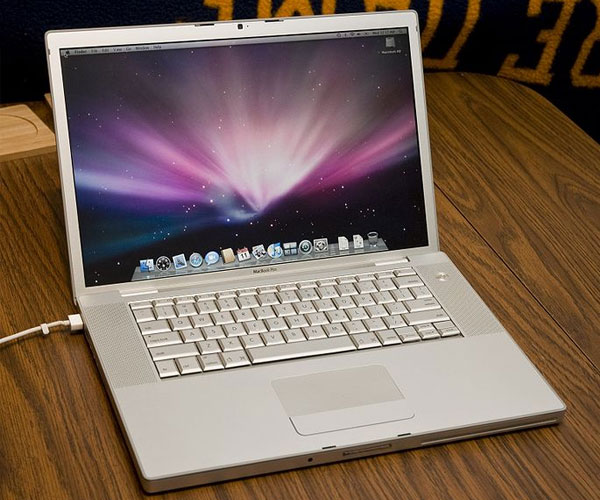
Source: WikiPedia
Apple first announced the original MacBook Pro in January 2006; it was the first portable Macintosh notebook to feature an Intel-based processor. Apple's MacBook Pro line was designed to replace the previous PowerBook series. Apple chose to rename the computer for two reasons; firstly, it was no longer going to feature a PowerPC processor and therefore, the word "Power" had no place in the title and secondly, because Apple felt that all Macintosh products should feature the word "Mac" somewhere in the title.
The MacBook Pro featured an entirely new design that paved the way for all future MacBook's. It was silver and beautifully slim but still extremely powerful. This was the first Apple notebook to feature an Intel Core 2 Duo dual-core processor, although Apple did scrap the FireWire 800, modem and s-video ports, which caused some controversy. Apple shipped the MacBook Pro in two variants, a low-endand high-end model. These models both featured Intel Core 2 Duo processors running at 1.83Ghz and 2.0Ghz respectively. Both variants also shipped with an Apple SuperDrive and were priced at $1,999 and $2,499 respectively.
Fact: Apple's MacBook Pro was originally priced at $1,999 for the base model. For this, you got a dual-core processor and an 80GB hard drive.
Fact: Apple released a 17-inch MacBook Pro in April 2006.
2006: MacBook
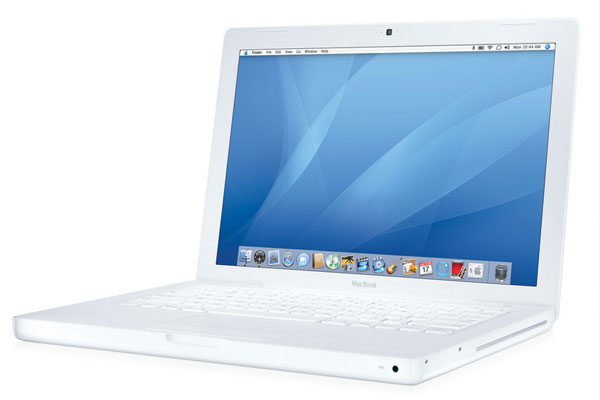
Source: Apple
Apple introduced their iconic black or white MacBook notebook in May 2006 to replace the iBook product range. The MacBook featured an all-new stylish and simplistic design created by Sir Jonathon Ive. The MacBook was also a lot more powerful than its iBook predecessor. As standard, MacBook's included a dual-core Intel Core 2 Duo processor, a MagSafe power adapter and Apple's front-facing iSightcamera.
The MacBook shipped in three different configurations when it was originally released in May 2006. The low-end configuration included a 1.8Ghz Core 2 Duo processor, a 60GB hard drive, 512Mb of RAM and a CD-RW/DVD-ROM drive. The mid-end model featured a 2.0Ghz Core 2 Duo processor, a 60GB hard drive, an Apple SuperDrive and 512Mb of RAM. The high-end model was virtually the same as the mid-end model, but it included an upgraded 80GB hard drive and also shipped in a black colour (as well as white).
Fact: Apple's original MacBook sold for $1,099, $1,299 and $1,499 for the low, mid and high-end models respectively.
Fact: Apple's MacBook included Bluetooth 2.0, Ethernet and Airport Extreme as standard. It also weighed only 5.2 lbs.
2007: iMac Aluminium
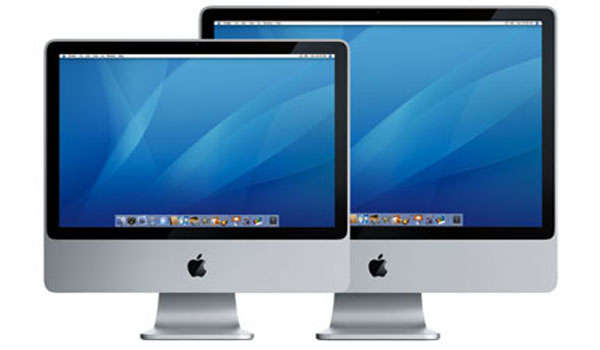
Source: WikiPedia
Apple released the original aluminium iMac in August 2007, a couple of years after the release of the iMac G5 in 2005. Apple's 2007 iMac featured an entirely redesigned case which was made from aluminium rather than the plastic that was previously used for the iMac G5. The design was beautiful, elegant and was much like the design of the Apple iPhone (which Apple had just released a couple of months earlier). It also shipped with a beautiful new slim line aluminium keyboard.
In terms of hardware specs, the iMac was a small upgrade from the iMac that was released in late 2006. It shipped in three variants, a low-end, mid-range and high-end model. The low-end model featured an Intel Core 2 Duo processor running at 2.0Ghz, 1GB of RAM, a 20-inch display and a 250GB hard drive. The mid-range model featured a 2.4Ghz processor, a 20-inch display and an upgraded 320GB hard drive while the high-end model had a 2.4Ghz processor and a 34-inch screen.
Fact: Apple's aluminium iMac shipped in three variants (low-end, mid-range and high-end) selling for $1,199, $1,499 and $1,799 respectively.
Fact: The original 2007 iMac was the first iMac to feature an Intel-based processor instead of a PowerPC processor.
2008: MacBook Air
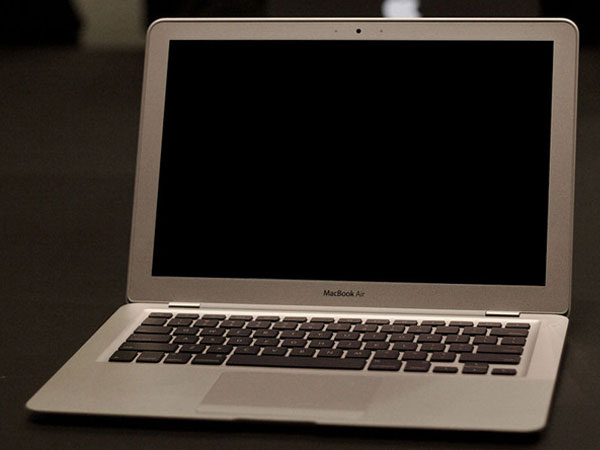
Source: WikiPedia
Apple released the original MacBook Air in January 2008. It was Apple's thinnest and most portable notebook ever. Apple created the MacBook Air with the intention of creating an extremely thin and portable high-end notebook. The product was a huge success and remains one of Apple's most popular MacBook product lines.
Although the PC was unbelievably thin and portable, Apple did make a lot of sacrifices to achieve this. The MacBook Air had no optical drive (although Apple did offer a wireless SuperDrive for those who wanted one), no Ethernet port(s), a relatively slow Intel Core 2 Duo 1.6Ghz processor, no FireWire and just one USB port. Despite these sacrifices though, the MacBook Air featured a full-sized 11-inch or 13-inch high resolution screen and a full-size Apple trackpad (which allowed the use of multi-tasking gestures that were familiar to iPhone and iPod Touch users).
Fact: Apple released just one configuration of the MacBook Air upon release. It featured a 1.6Ghz processor, 2GB of RAM and an 80GB hard drive. It cost $1,799.
Fact: Apple marketed the MacBook Air as the world's thinnest notebook. Apple also released an ad in which a MacBook Air was revealed from an envelope.
2008: MacBook (Aluminium)
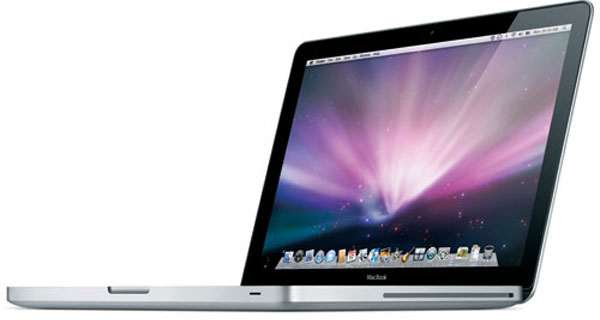
Source: WikiPedia
Apple released their aluminium MacBook in October 2008. It featured an entirely redesigned case that was similar to that of the recently released MacBook Air. The MacBook featured a beautifully well-designed unibody case made from one solid piece of aluminium. It also featured a beautiful glass display, a multi-touch trackpad (which supported two, three and four fingered multi-touch gestures) and a backlit keyboard (only the high-end model). It was the first ever MacBook to have this feature.
Apple shipped the MacBook in two configurations, a low-end and high-end model. The low-end model shipped with a 2.0Ghz Intel Core 2 Duo processor, a 160GB hard drive and 2GB of RAM while the high-end configuration shipped with a 2.4Ghz processor, a 250GB hard drive, 2GB of RAM and a backlit keyboard. They sold for $1,299 and $1,599 respectively. The design of the MacBook later paved the way for the design of the MacBook Pro after the MacBook was discontinued by Apple.
Fact: Apple also offered a built-to-order version of the MacBook which included a 320GB hard drive plus a 128GB solid-state drive.
2008: MacBook Pro
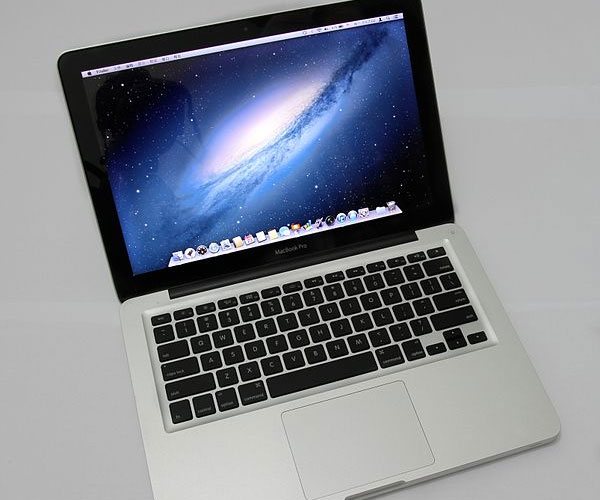
Source: WikiPedia
Apple released the MacBook Pro alongside the release of the MacBook in October 2008. It featured the same aluminium unibody design as the MacBook but featured higher specs. On the fact of it, the design of the MacBook Pro was virtually identical to that of the MacBook, which allowed Apple to simplify the visual branding of their product line. It was slightly more powerful than the MacBook and shipped in two variants, a low-end and high-end model. The low-end model featured a 2.4Ghz Intel Core 2 Duo processor, 2GB of RAM, a 15-inch high resolution screen and a 250GB hard drive. The high-end version featured a 2.53Ghz dual-core processor, 4GB of RAM and a 320GB hard drive.
Both of the models featured the same 15-inch display and slim design. They also both shipped with backlit keyboards as standard and Apple offered a built-to-order version of the MacBook Pro featuring a 128GB solid-state hard drive.
Fact: Apple dramatically improved the graphics performance with the 15-inch MacBook Pro as it featured two independent graphics chipsets.
Fact: Apple quietly upgraded the MacBook Pro in early-2009 from a 2.53GHZ to a 2.66GHZ processor.
2012: MacBook Pro Retina
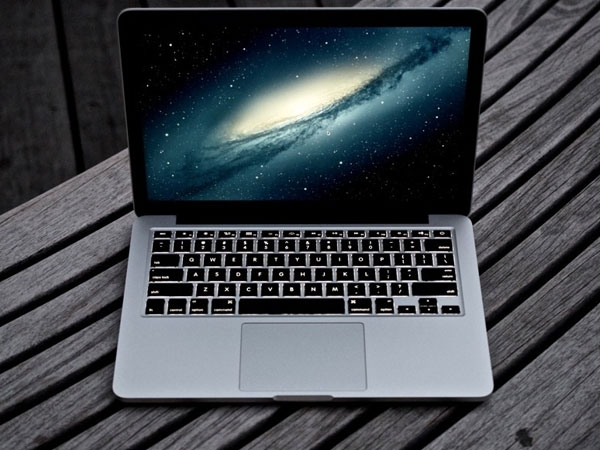
Source: The Verge
Apple released the MacBook Pro Retina in June 2012, nearly four years after the introduction of the original MacBook Pro in 2008. It was the first time Apple had redesigned the MacBook Pro in four years and the Retina version featured an all-new slim design that was similar to that of the MacBook Air. Notably, the MacBook Pro Retina also featured Apple's Retina display which was first made famous by the iPhone and iPod Touch devices. It had a resolution of 2880x1800 pixels, making it perfect for video editors and photographers alike.
The technical specifications of the MacBook Pro Retina were impressive too. It featured an Intel Core i7 processor, up to 16GB of RAM and a solid-state hard drive. Apple chose not to include an optical drive with the MacBook Pro Retina however, as portability was an important factor in the design. Apple also neglected to include an Ethernet or FireWire port, although they did include support for Intel's new Thunderbolt connection. The MacBook Pro Retina was initially sold by Apple in two configurations. The low-end configuration featured a 2.3Ghz Intel i7 quad-core processor, 8GB of RAM and a 256GB solid-state hard drive. The high-end configuration included a 2.6Ghz Intel i7 quad-core processor, the same 8GB of RAM and a 512GB solid-state hard drive.
Fact: Apple also released as built-to-order MacBook Pro Retina which included a 2.7Ghz Intel i7 processor, up to 16GB of RAM and a 768GB hard drive.
Fact: Apple upgraded the MacBook Pro Retina in 2013 to include Intel Haswell Processors.
2013: Mac Pro
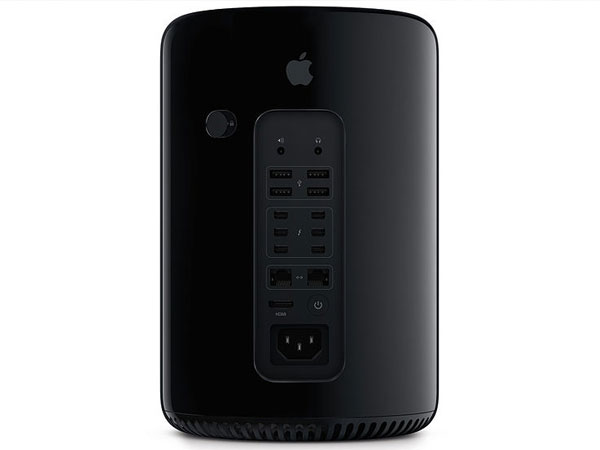
Source: WikiPedia
Apple released the second-generation Mac Pro in December 2013, almost seven years after the introduction of the original Mac Pro in 2007. The second-generation Mac Pro featured a radical redesign and had virtually no resemblance to the previous generation of the Mac Pro. Apple opted for a black futuristic cylindrical design, making the new Mac Pro a far-cry from the huge tower-like design of the original Mac Pro. It was also a fraction of the size of the original Mac Pro. Performance was the main selling point of the second-generation MacBook Pro. It featured up to 12 cores of processing power the entire PC was designed around a unified thermal core to maximise cooling, performance and efficiency.
Apple shipped the Mac Pro in two configurations. The lower-end model featured a 3.7Ghz Quad-Core Intel Xeon E5 processor, 12GB of RAM, a Dual AMD FirePro D300 graphics care and a 256GB solid-state hard drive. The higher-end model featured a 3.5Ghz 6-Core Intel Xeon E5 processor, 16GB of RAM, the same graphics card and the same 256GB hard drive.
Fact: Apple shipped the two variants of the Mac Pro priced at $2,999 and $3,999 respectively, making it one of the most expensive Macintosh products ever.
Fact: Apple's second-generation Mac Pro was one of the few Mac's to be assembled in the USA rather than overseas.
2014: What's Next for the Macintosh?
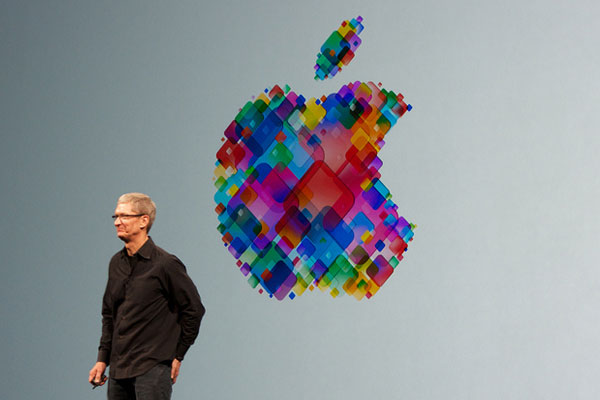
Source: Flickr
What does 2014 hold for Apple and the Mac? Share your thoughts on what the future holds for the Mac in the comments section below? Will 2014 be a good year for the company, or will they succumb to the ever-increasing pressure of the competition? (i.e. Windows 8)